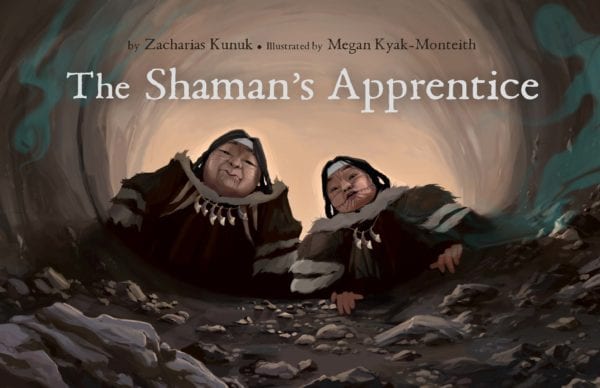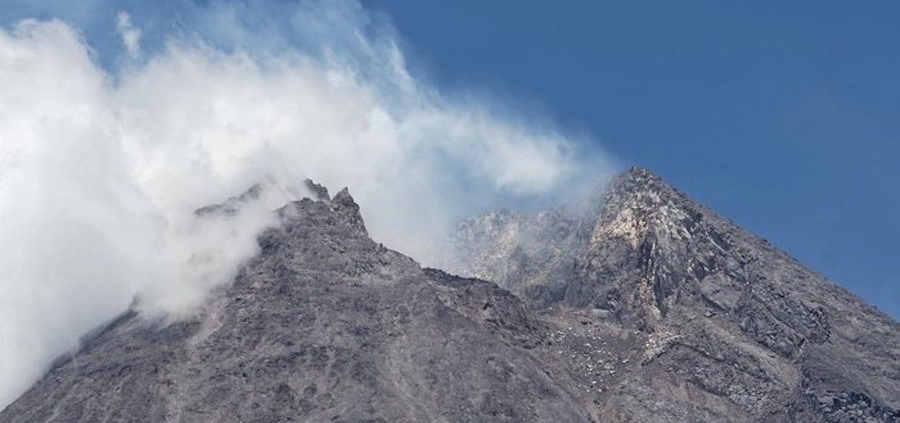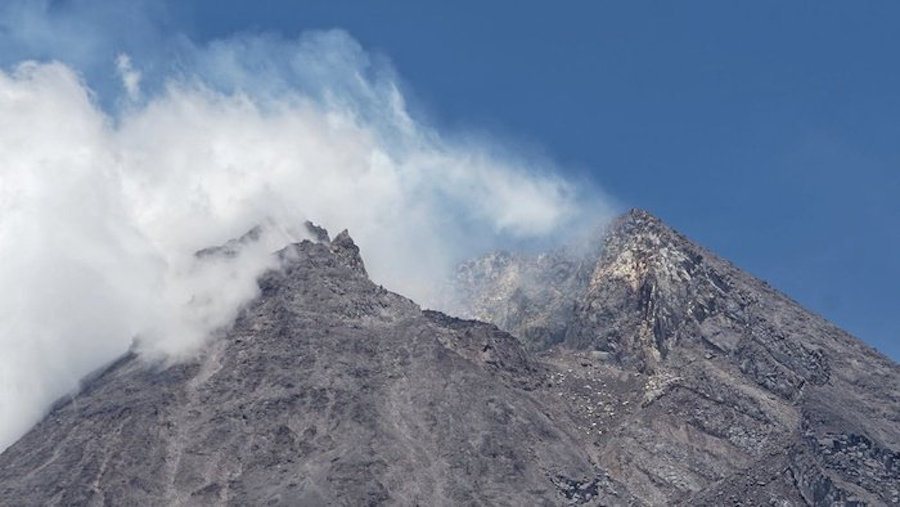Researchers said the carved, wooden lifelike snake matches “magical” staffs portrayed in ancient rock art from the region.
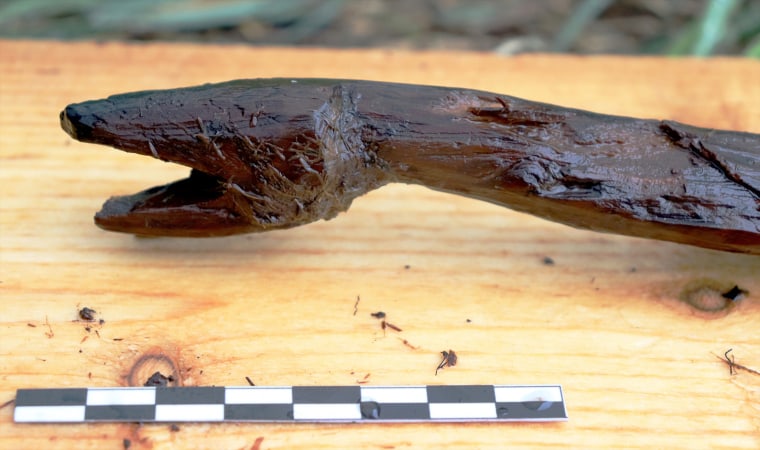 Archaeologists in Finland have unearthed a 4,000-year-old life-size wooden carving of a snake believed to be a ritual staff of a Neolithic shaman.Satu Koivisto
Archaeologists in Finland have unearthed a 4,000-year-old life-size wooden carving of a snake believed to be a ritual staff of a Neolithic shaman.Satu KoivistoJune 29, 2021,
By Tom Metcalfe
A 4,400-year-old life-size wooden snake unearthed in Finland may have been a staff used in “magical” rituals by a Stone Age shaman, according to a study released Monday.
The lifelike figurine, which was carved from a single piece of wood, is 21 inches long and about an inch thick at its widest, with what seems to be a very snake-like head with its mouth open.
It was found perfectly preserved in a buried layer of peat near the town of Järvensuo, about 75 miles northwest of Helsinki, at a prehistoric wetland site that archaeologists think was occupied by Neolithic (late Stone Age) peoples 4,000 to 6,000 years ago.
It’s unlike anything else ever found in Finland, although a few stylized snake figurines have been found at Neolithic archaeological sites elsewhere in the eastern Baltic region and Russia.
“They don’t resemble a real snake, like this one,” University of Turku archaeologist Satu Koivisto said in an email. “My colleague found it in one of our trenches last summer. … I thought she was joking, but when I saw the snake’s head it gave me the shivers.”
“Personally I do not like living snakes, but after this discovery I have started to like them,” she added.
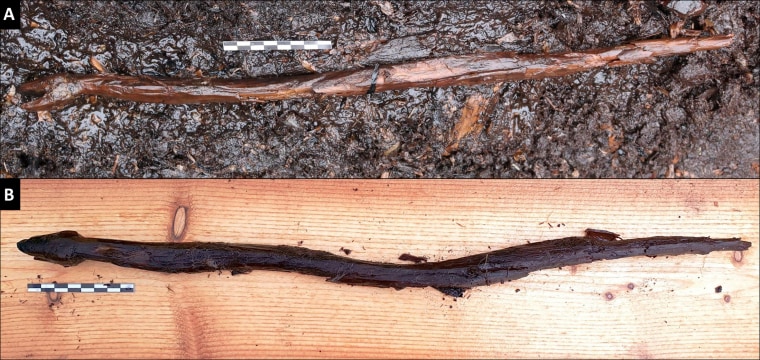
Koivisto and her colleague Antti Lahelma, an archaeologist at the University of Helsinki, are the co-authors of the study on the wooden snake published in the journal Antiquity.
They think it may have been a staff used in supposedly magical rituals by a shaman — someone who communicated with spirits in a similar way to the “medicine people” of traditional Native American lore.
It’s thought the ancient peoples of this region practiced such shamanic beliefs, in which the natural world is inhabited by multitudes of usually unseen supernatural spirits or ghosts — a traditional belief that persists today in some of the remote northern regions of Scandinavia, Europe and Asia.
Ancient rock art from Finland and northern Russia shows human figures with what look like snakes in their hands, which are thought to be portrayals of shamans wielding ritual staffs of wood carved to look like snakes. Lahelma said snakes were regarded as especially sacred in the region.
“There seems to be a certain connection between snakes and people,” Lahelma told Antiquity. “This brings to mind northern shamanism of the historical period, where snakes had a special role as spirit-helper animals of the shaman … Even though the time gap is immense, the possibility of some kind of continuity is tantalizing: Do we have a Stone Age shaman's staff?”
 Archaeologists work at an excavation site in Finland.Satu Koivisto
Archaeologists work at an excavation site in Finland.Satu KoivistoThe figurine from Järvensuo certainly looks like a real snake. Its slender body is formed by two sinuously carved bends that continue to a tapered tail. The flat, angular head with its open mouth is especially realistic. Koivisto and Lahelma suggest it resembles a grass snake or European adder in the act of slithering or swimming away. The place where it was found was probably a lush water meadow at the time when it was “lost, discarded or intentionally deposited,” the researchers wrote.
Wood usually rots away when exposed to oxygen in the air or water, but sediments at the bottoms of swamps, rivers and lakes can cover some organic objects and preserve them for thousands of years.
The site near Järvensuo is thought to have been on the shores of a shallow lake when it was inhabited by groups of people in the late Stone Age. Recent excavations have yielded a trove of organic remains that have enabled archaeologists to create a more complete record of the site, Koivisto said. The finds have included a wooden tool with a handle shaped like a bear, wooden paddles and fishnet floats made of pine and birch bark.
“What a remarkable thing,” said Peter Rowley-Conwy, an archaeologist and professor emeritus of Durham University in the United Kingdom, who was not involved in the research. “The ‘head’ appears definitely to have been carved to shape.”
But he was cautious about ascribing greater meaning to it: “A skeptic might wonder whether the sinuous shape was deliberate, or an accidental result of four millennia of waterlogging,” he said in an email. “I have worked on various bog sites with preserved wood, and wood fragments can be considerably distorted.”
Koivisto warns that artifacts like the “snake staff” may be lost as many wetland archaeological sites dry up.
“Wetlands are more important to us than ever before, because of their vulnerability and degradation of fragile organic data sources [from] drainage, land use and climate change,” she said “We have to hurry, before these valuable materials will be gone for good.”
